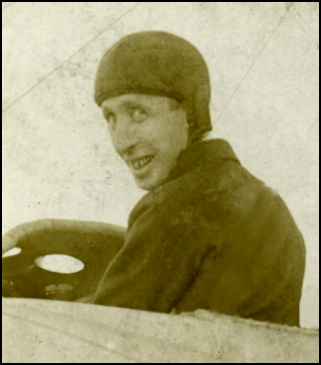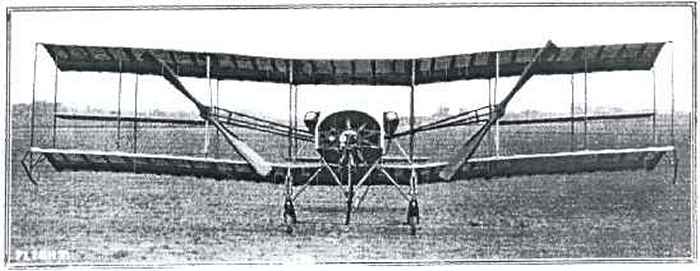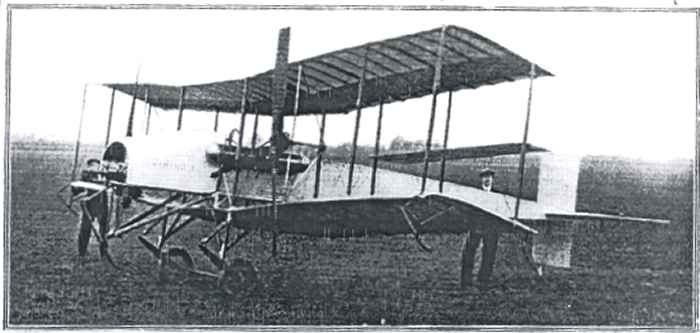
1875-1964 |
 |
Collection of Catherine Evans, 9-16-08 |
from FLIGHT- March 13, 1919 A committee has been appointed, consisting of some of the best-known men in the insurance world, and this committee has been fortunate enough to secure the services of Capt. Horatio Barber, R.A. R, who has been a well-known figure in aviation for a number of years. Our readers will probably remember him best as a pioneer with his Valkyrie monoplane, which he designed in the early days of the movement. He was the first man in Great Britain to receive an aeronautical degree, has had long experience as pilot, designer and constructor, and built the first all-British passenger carrying machine. In addition, it was he who made the first flight on Salisbury Plain, and built the first public hangars at Hendon, while he has also designed and piloted airships. Before the war he was engaged as a consultant on aviation and had a large practice which included members of Lloyd's whom he advised on all questions relating to aircraft insurance. It will be appreciated, then, that the new association is exceedingly for-tunate in having secured the services of so notable an expert to advise them in all the details of a business which, while it is not new, has more than one feature at present indeterminate. Aircraft insurance is a branch of the business which will require very care-ful initial handling combined with close knowledge of the subject and considerable breadth of outlook. These qualities Capt. Barber possesses in marked degree and we congratulate the Association on their choice. |
from Catherine Evans, 9-16-08 |
|
You may find it convenient to use your "BACK" button to return to this page. |
 |
Collection of Catherine Evans, 9-16-08 |
|
|
|
"In 1909 a civilian experimenter named Horatio Barber, obtained permission from the War Office (as it was called then) to use a piece of land on Knighton Down, known to the locals as the Hill of the Larks. This improbable stretch of rough downland turf at Larkhill certainly would not be selected as a suitable flying ground for aircraft of today, even with advanced technology. Pilots of that era were incredibly brave but somewhat foolhardy as they did not know how to fly, let alone if their aircraft themselves were capable of flight. In June 1910 the newly established British and Colonial Aeroplane Company gained permission to use the area to test their new Box kites and as a school to train pilots. Sited to the south of the Government hangar the three unit shed had to be built so that it would not block the view of the sunrise during the Summer Solstice celebrations at Stonehenge, the gap between the hangars became to be known as the 'Sungap'. Today the spot is marked by a small concrete plinth and a brass plaque. The location of the plaque is in Wood Road Larkhill at grid reference SU143436. The text reads as follows, 'On this site the First Aerodrome for the Army was founded in 1910 by Capt J D B Fulton RFA and Mr G B Cockburn. This later became 2 Coy Air BN RE. The British and Colonial Aeroplane Company forerunners of the Bristol Aeroplane Company established their Flying School here in 1910. The First Military Air Trials were held here in 1912'." These paragraphs were excerpted from a page on the website of the Amesbury Rotary Club. . You can read the whole story by clicking on the title. |
|
by Horatio Barber, 1917 Captain, Royal Flying Corp. You will find a complete listing of all of the chapters and can view a full-size display of each page, complete with illustrations which can be enlarged with a click. |
|
|
|
Flightgobal/archive serious about aviation WELCOME The Flightglobal Archive invites you to explore 100 years of aviation history as it appeared in the original pages of Flight Magazine from 1909-2005. * Every issue of Flight Magazine published between 1909-2005, digitally scanned and fully searchable * Thumbnail browser interface allowing for rapid issue viewing * Save and print your favourite articles * Topic pages, plus unique archive photo and cutaway galleries * 100% FREE ACCESS – forever. In fact we’re positively encouraging you to link to, copy and paste from, and contribute to the development of this unique record of aerospace and aviation history * Read our FAQs The Flightglobal Archive is a collaborative and ongoing project. We welcome your input in growing our topic categories and discovering hidden gems within the depths of time. If you find something of interest that you want to share with us and other Archive visitors then let us know You will find a wealth of material in this incredible resource. You can begin your search by clicking on the title and entering "Horatio Barber" in the search box. An example of the available material is as follows. |
| January 20, 1912 |
|
"VIKING I" is a biplane, the first of that type to materialize from the ever active brain of Mr. H. Barber. Although he has been
so long connected with the single-deck type, the germ of this conception was known long since in the days before he left Salisbury
Plain to continue his experimental work in the north of London. That he should have seen fit to produce such a machine at |
their numerous other clients, a leading place in the industry of aeroplane construction. Nor
can two opinions exist as to the soundness of the design, whether viewed from the purely aerodynamical standpoint, wether
esamined in the fight of ability to comnply with the exacting requirements, or whether considered from the point of view of the
pilot's safety. Consequent with the adoption of the fuselage is the distinctly |
 |
|
the present time is yet more evidence of the clearness which he
grasps the ever-changing aspect of the development of aviation in this country, for it is evident to all students that
the leading constructors of the world are now concentrating their attention on the development of two types of aeroplanes rather
than identifying themselves with a single speciality. "Viking I" differs from his previous productions in that it |
sound practice of disposing the engine in front of the pilot, a system which was originated in this country and the advantages of
which are just becoming apparent to our foreign confrefes. The main body is constructed throughout of silver spruce excepting in the region of the engine, where, in view of the extra strains that are placed upon it, ash is employed. Mounted at its forward extremity, with its inlet pipe extruding towards |
 |
| flew head first, also it is characterised as a biplane, by the possession of a definite fuselage or covered-in body, which has the engine in front and the pilot's seat just between the main planes. In its detail construction there is that same careful attention to minor matters and sound principle that has given the workmanship of the Aeronautical Syndicate, Ltd., who carry out all Mr. Barber's constructive work in addition to that of |
the direction of advance, in the motor, a 50 h.p. Gnome. By means of a short propeller shaft and twin chains arranged Wright
fashion, the power is transmitted to the two A.S.L. tractors, that transform into effective thrust the rotary motion of the engine. A well formed torpedo front of sheet aluminium is arranged over the engine and this together with a slanting screen of the same material at the rear, protects the pilot and passenger |
|
From The Early Birds of Aviation Roster, 1996 |


|